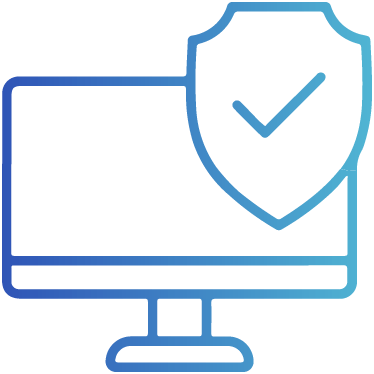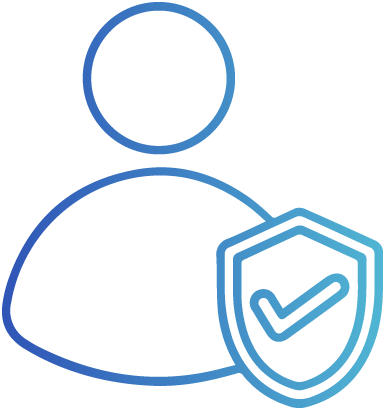Endpoint security is a critical component of an organization’s cybersecurity strategy, focused on securing end-user devices such as desktops, laptops, mobile phones, etc. that connect to the corporate network. These devices serve as potential entry points for cyber threats, making them vulnerable targets for malware, ransomware, phishing, and unauthorized access. The purpose of endpoint security is to detect, prevent, and respond to threats at the device level, ensuring that every endpoint complies with security protocols and does not compromise the integrity of the broader network. It plays a vital role in protecting distributed work environments, minimizing the attack surface, enabling real-time threat detection and automated response, ensuring regulatory compliance, and maintaining operational continuity. While endpoint security typically operates across higher layers of the OSI Model, it also ties closely to the Physical Layer by securing the actual hardware and physical interfaces of devices—such as USB ports, network connections, and access to storage media. Through hardware-based authentication, port control, and physical device safeguards, endpoint security helps fortify the very foundation of the IT infrastructure, starting at the physical layer and extending across the digital environment.


Unified Endpoint Management (UEM) is a comprehensive solution that enables organizations to centrally manage and secure all endpoints—including desktops, laptops,...

An Endpoint Detection and Response (EDR) solution is a cybersecurity technology designed to monitor, detect, investigate, and respond to threats...

Extended Detection and Response (XDR) is an advanced cybersecurity solution that unifies threat detection, investigation, and response across multiple security...

Endpoint Privilege Management (EPM) is a cybersecurity solution designed to control, manage, and monitor user privileges on endpoints, such as...

Zero Trust Network Access (ZTNA) is a modern security framework that replaces the traditional "trust but verify" model with a...

Mobile Device Management (MDM) is a security solution that enables organizations to manage, monitor, and secure mobile devices such as...
Endpoint Security refers to a set of practices, technologies, and tools designed to protect endpoint devices—like laptops, desktops, mobile phones, and servers—against cyber threats. These devices serve as access points to a network and are often targeted by attackers.
🔐 1. Antivirus and Anti-Malware Software: These solutions scan and protect endpoints from malware, viruses, and other malicious software. They typically include: Signature-based detection (recognizing known threats) Heuristic analysis (detecting unknown or evolving threats) Real-time protection and automatic updates 🛡️ 2. Endpoint Detection and Response (EDR): EDR solutions provide real-time monitoring and analysis of endpoint activities to detect, investigate, and respond to security threats. Features include: Continuous monitoring of endpoints Threat intelligence integration Incident response and forensics capabilities Behavioral analysis to detect anomalies 🔐 3. Mobile Device Management (MDM): MDM solutions are used to secure mobile devices like smartphones and tablets. Key features include: Remote device management Application control Encryption of mobile data Device tracking and wiping capabilities Enforcing security policies (e.g., password policies) 🔐 4. Endpoint Privilege Management (EPM): EPM solutions help manage and control user privileges on endpoint devices to enforce the principle of least privilege. Features include: Limiting administrative access to prevent misuse Privilege elevation for specific tasks Control over who can install or run applications Monitoring of privileged activity 🔒 5. Data Loss Prevention (DLP): DLP solutions protect sensitive data from being leaked or accessed without authorization. Key functions include: Monitoring data flow to and from endpoints Blocking the transfer of sensitive information to unauthorized locations (e.g., USB drives, cloud storage) Enforcing encryption on sensitive data Content filtering to prevent unauthorized sharing 🔑 6. Firewalls (Host-Based): Host-based firewalls are installed on endpoints to monitor and control incoming and outgoing traffic. They typically: Block unauthorized access Prevent external threats from exploiting the device Allow network traffic to be filtered based on rules 🔒 7. Full Disk Encryption (FDE): FDE encrypts the entire hard drive of an endpoint to prevent unauthorized access to stored data in case of theft or loss. Features include: Strong encryption algorithms (e.g., AES-256) Password or biometric authentication required for access Protection of sensitive information even when the device is powered off 🛡️ 8. Zero Trust Network Access (ZTNA): ZTNA is a security framework that ensures users and devices are authenticated and continuously verified before being granted access to any network or application. Features include: Authentication based on identity, device posture, and contextual factors Least-privilege access to applications Continuous monitoring of user behavior and network traffic Integration with identity and access management (IAM) systems 🔑 9. Patch Management: Patch management tools automatically identify and apply software updates and patches to secure vulnerabilities on endpoints. Key features include: Automated patch deployment Detection of missing patches Prioritization based on the severity of vulnerabilities Centralized management of patching operations 🔐 10. Cloud Access Security Broker (CASB): CASBs are used to secure access to cloud applications and services from endpoint devices. They typically offer: Data encryption in transit and at rest Identity and access control policies Shadow IT detection (identifying unauthorized cloud services) Monitoring and compliance features for cloud use 🔐 11. Web Filtering: Web filtering solutions protect endpoints from malicious websites and content. Key features include: Blocking access to harmful or untrusted websites Monitoring web traffic to detect and block threats Content categorization to block inappropriate or dangerous content 🛡️ 12. Virtual Private Network (VPN): A VPN ensures that the data transferred between an endpoint device and the network is encrypted, which protects sensitive information from being intercepted by attackers. Features include: Secure internet browsing Protection of data over public networks (e.g., Wi-Fi) Remote access to corporate resources 🧑💻 13. Behavior-Based Threat Detection: This solution focuses on detecting malicious activity based on user or system behavior rather than relying solely on known threats. Key features include: Behavioral anomaly detection Identifying deviations from normal activity Identifying insider threats ✅ Summary of Endpoint Security Solutions: Solution Description Antivirus/Anti-Malware Scans and removes malicious software EDR Provides real-time monitoring and response MDM Manages and secures mobile devices EPM Manages user privileges on endpoints DLP Prevents sensitive data leakage Host-based Firewall Monitors and controls traffic on endpoints Full Disk Encryption Encrypts the entire device to protect data ZTNA Ensures secure access with continuous verification Patch Management Keeps systems up-to-date with security patches CASB Secures cloud application access Web Filtering Blocks access to malicious or inappropriate sites VPN Encrypts data traffic between endpoints and networks Behavior-Based Detection Detects abnormal or suspicious behavior